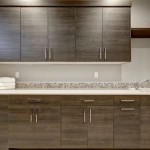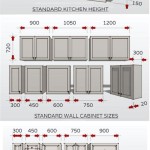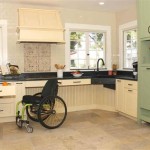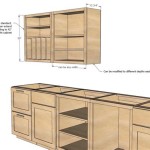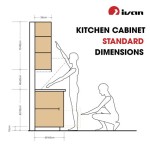Essential Aspects of Average Kitchen Cabinet Depth
When planning a kitchen renovation, one of the crucial decisions to make is the depth of your kitchen cabinets. The depth of your cabinets will impact various factors, including storage capacity, countertop overhang, and the overall functionality of your kitchen. In this article, we'll delve into the essential aspects of average kitchen cabinet depth to help you make an informed decision.
Standard Kitchen Cabinet Depth
Typically, kitchen cabinets come in standard depths, which vary depending on the type of cabinet. Base cabinets, which are the lower cabinets that sit on the floor, typically have a depth of 24 inches. This depth provides ample storage space for pots, pans, dishes, and other kitchen essentials.
Depth Variations
While 24 inches is the most common depth for base cabinets, there are variations available to accommodate different kitchen designs and storage needs. For example, shallow base cabinets with a depth of 18 inches or 21 inches can be used in smaller kitchens or to create more countertop space. Deeper base cabinets, measuring 30 inches or 36 inches deep, offer additional storage capacity for bulky items like appliances or large pots and pans.
Wall cabinets, which are mounted above the base cabinets, typically have a depth of 12 inches. This depth allows for easy access to frequently used items like spices, glasses, and mugs. However, deeper wall cabinets, measuring 15 inches or 18 inches deep, can provide more storage space for larger items like kitchen appliances or serving dishes.
Countertop Overhang
The depth of your kitchen cabinets also impacts the countertop overhang. Countertop overhang refers to the amount of countertop that extends beyond the edge of the base cabinets. A standard countertop overhang is 1.5 inches to 2 inches, which provides a comfortable working surface and prevents items from falling off the counter.
However, the depth of your cabinets will determine the maximum overhang possible. For example, if your base cabinets are 24 inches deep, you can have a countertop overhang of up to 2 inches. If your cabinets are deeper, you may have to reduce the overhang to ensure proper support for the countertop.
Functionality and Aesthetics
The depth of your kitchen cabinets will also affect the overall functionality and aesthetics of your kitchen. Deeper cabinets provide more storage space, but they can also make it harder to reach items in the back. If you have limited mobility or prefer easy access to all your kitchen essentials, shallower cabinets may be a better choice.
From an aesthetic perspective, deeper cabinets can create a more substantial and imposing look, while shallower cabinets can make the kitchen feel more spacious and airy. The depth of your cabinets should complement the overall style and design of your kitchen.
Conclusion
Choosing the right depth for your kitchen cabinets is an important decision that should be made carefully. By considering factors such as storage capacity, countertop overhang, functionality, and aesthetics, you can select cabinet depths that optimize the functionality and style of your kitchen. Whether you prefer standard depths or variations, the key is to create a kitchen that meets your specific needs and preferences.

Kitchen Cabinet Sizes What Are Standard Dimensions Of Cabinets

Kitchen Unit Sizes Cabinets Measurements Height Cabinet
Guide To Kitchen Cabinet Sizes And Dimensions

Guide To Master Kitchen Cabinet Dimensions With Ease Waterbuckpump

Kitchen Cabinet Dimensions Size Guide

Standard Cabinet Dimensions

3 Types Of Kitchen Cabinets Size Dimensions Guide Guilin

Base Cabinet Size Chart Builders Surplus

Proper Depth For Frameless Cabinets

N Standard Kitchen Dimensions Renomart
Related Posts


